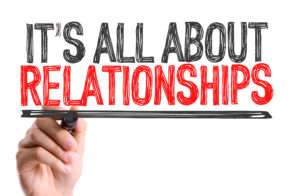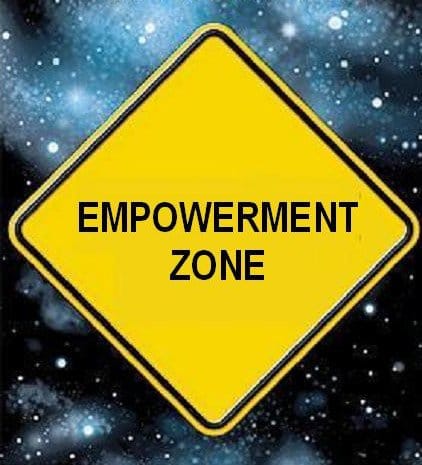
by Adam L Stanley | Mar 4, 2016 | Relationships, Technology
Another blog on eMail Etiquette
About a week ago, I had a four-hour flight. I completely cleaned out my inbox before I boarded the plane.
Inbox: 0
For once, I didn’t use the in-flight WiFi to check anything; I just relaxed, read my Kindle on Android, and slept as soundly as I could despite the guy behind me snoring rather loudly. When I landed, I turned on my phone (I swear, American Airlines, it was in airplane mode during the flight), and glanced briefly at my inbox.
Guess how many new e-mails I had? 20? 50?
Nope. I had 100 unread emails. So roughly 25/hour came in as I was 35K feet above — and this wasn’t even during core working hours.
I am not THAT GUY that wants to return to the days of snail mail. Nor am I one that says we must declare “email amnesty” or “war on email”. The fact is, e-mail made work effective, yes — and it allowed people on opposite sides of the globe to collaborate in a much easier fashion — but it’s also a giant hit to productivity. A big, fat, time sinking, eyeball tiring, emotions misreading, productivity drain.
Quick stats: 89 billion business-related e-mails were sent daily in 2014; by 2015, that number was 100 billion, and by the end of 2016, it’s going to be around 116B. That’s the equivalent of everyone on the planet sending 15-20 business e-mails per day (which is even more absurd if you consider that only around 40% of the world population has an internet connection today).
E-mail is a productivity problem because while it’s a way to discuss work and projects, it’s not actually work. Typically, e-mails indicate or reference work that needs to be done — and they do so in a distracting way. An average employee needs 64 seconds to recover their thoughts after reading an e-mail, and they get about 200 e-mails per day. Do that math. By and large, 11.2 hours of a 40-hour work week are spent on e-mails — or slightly over 25 percent.
We can do better. Here are some tips.
 1. Stop the Reply All Culture
1. Stop the Reply All Culture
Watch this video on the e-mail tree. You’ve all lived through this. Reply-alls can be a nightmare, especially because they are deeply tied to hierarchy — as more senior leaders begin to respond, others feel the need to chime in. A reply all culture is awful for productivity.
Resist the temptation to reply all.
- Consider talking directly to the main point person on the project w/any concerns (Skype great for remote colleagues)
- If you must reply all, begin by thinking about your response and then ask a co-worker if you think it has value
The overall goal for e-mail communication should be value. Frankly, all communication should be about value. Think about the last person that trapped you in the break room telling you stories about their dog when you wanted to finish up an important project. No e-mail should be sent that doesn’t advance a project or an idea, encourage new thinking about a project, or communicate on a norm or deadline. If the value isn’t there, the e-mail doesn’t need to be sent.
2. Understand To vs. CC vs. BCC
If there were a Miss Manners for email etiquette, I believe she would suggest this:
- The “To” field is for the main person the e-mail is directed at, or the person with an immediate deliverable from it
- The “CC” field is for people who should have knowledge of the project, be it tangential team members or senior managers
- BCC should be used sparingly — in the wrong context without explanation, it can fray trust between collaborators; if someone is going to be BCCed, they can probably just be CCed
3. Consider reviewing email only once or twice a day
Being tethered to e-mail throughout the day is bad for productivity, as seen above. Try doing one sweep in the morning — but limit it to 20-30 minutes, as focusing on e-mail tasks first thing in the morning is a waste of a good energy period for most people — and then one in the afternoon. During the day, focus on deep work and perhaps (gasp) actually talking to people.
If you think to yourself you would be out of the loop only checking e-mail twice a day, well consider that going and talking to co-workers is another form of being in the loop that worked quite well before e-mail ever existed for business.
4. Think then write
This can be hard for some people because work projects do become emotional at times, even when we want them to be logical and process-driven — but please think before you write e-mails, as a major general rule. Virtually any e-mail sent can come back on you in a negative way (hardly an ideal situation), and you don’t want to be seen as a co-worker that clogs up people’s productive time.
There are dozens and dozens of potential rules for e-mailing, but above all, try to follow the same rule you should follow with conversations and meetings: add value and respect the time of others we work with. If you start from there, the rest should fall into place with practice. As always, I would love to hear your thoughts.
Be well. Lead On.
Adam
Related Posts:
Put down your smartphones, people!
Five Core Skills every CIO must continuously improve
Khalil Gibran on Leadership

Adam L. Stanley Connections Blog
Technology. Leadership. Food. Life.
AdamLStanley.com
Follow me on Twitter | Connect with me on Linked In | “Like” me on Facebook
by Adam L Stanley | Nov 29, 2014 | Leadership, Life, Relationships, Technology
Could it be that your Mr or Mrs Right is standing in front of you at Starbucks or Protein Bar?

Can you live without it for a week? Day? 5 minutes?
Put down your smartphones people. Let me repeat. Put down your smartphone. Well, after you read this blog of course.
Every morning, I stand in line at Starbucks waiting for my daily grande black eye and roasted ham and swiss sandwich. Yes, a creature of habit, I get the same thing every day, 510 calories of buttery goodness. But I digress. As I stand in line, I look at the diversity of people standing around me. I see tall and short. I see black, white, Latino, and Asian. I see thick and thin. I see business women, artists, bicycle messengers, and lawyers (lots of lawyers, actually). I see gay and straight, tall and short. Lots of people I find attractive, and some you might find attractive even if I do not. And, more often than not, NONE OF THESE PEOPLE ARE ACTUALLY TALKING TO EACH OTHER. No actual engaging in human interaction with other beings. What are they doing? They are on their smartphones.
Texting. Facebooking. Snapchatting. Emailing. Tweeting. Blogging. Calendaring. Working. Planning. Doing just about everything except actually communicating with people nearby.
And all I can think is, what a missed opportunity? Growing up, I remember my mom taking me to the grocery store with her. While waiting in line to checkout, inevitably, she would end up in conversation with the person behind her. My dad would share his opinions with just about everyone he ran into in a local hardware store or at the police station after work. I grew up communicating with people and the love of communicating, coupled with my fascination with people watching, has been with me for decades. Enter smartphones.
And now, yes, I find myself standing in line searching for the latest blog by Switch and Shift, seeing what my colleagues are chatting about on Yammer, religiously following back on Twitter, and fighting the never ending battle to clean out my email inbox (Sad reality: It will never happen. Just accept it.) So, lest I be called a hypocrite, I will admit what I am asking you to do is difficult. INCREDIBLY difficult. Â But let’s try it together.
Let’s put down our cell phones.
1) Set a target for how long you will leave it in a drawer or the car.
Only you can decide what is a stretch but realistic target in terms of period of time. Could be a a week? A day? How about an hour during the business day? 5 minutes?
2) Go somewhere you go fairly regularly, and strike up a conversation with someone around you
During your no cell phone (day/week/hour/minute) make a visit to a grocery store, coffee shop, food spot, office break room, or anywhere you typically find yourself on a fairly regular basis. Do what you normally do EXCEPT use your phone (to completely avoid temptation, pay with … gasp … CASH rather than using your smartphone payment app). If you, like me, get energy from others and are more extroverted, strike up a conversation. If you are more of a people watcher, just observe the traits, attitudes, outfits, hair, whatever! If you are bold, flirt with the amazing person you now realize comes to the same place at the same time every day.
3) Encourage someone else to do the same thing.
You will meet someone cool, notice a new hair style or fashion, or maybe even simply realize for the first time how good your coffee tastes when you drink it piping hot and only focus on the experience. Share that with someone, share it with me or others on this blog. Spread the word.
With so many dating sites around, perhaps some of you are spending this time on these sites, editing your profile and replying to messages? There are sites for Christians, Jews, farmers, baby boomers, gay men and lesbian women, millionaires, and more. And I have many many many friends that are long-term or recently single. As I look around at the heads bowed down, eyes focused on phones and tablets, I can’t help but wonder if perhaps we are missing something fairly basic.
Could it be that your Mr or Mrs Right is standing in front of you at Starbucks or Protein Bar? Look up. Now!
Be Well. Lead On.
Adam
One final note >>>
Pedestrians: Put down your cell phones. Unless you live in a city that has one of these special cellphone lanes. Yeah, I think its pretty sad too!

Cellphone Lane? (China Daily via Reuters)

Adam Stanley
Adam L. Stanley Connections Blog
Technology. Leadership. Food. Life.
AdamLStanley.com
Follow me on Twitter | Connect with me on Linked In | “Like me on Facebook

by Adam L Stanley | Mar 23, 2014 | Leadership, Quotes and Inspiration, Relationships, Teamwork
 Building relationships based on respect
Building relationships based on respect
People who have worked with me before have heard me on this particular soapbox quite a bit and for those I will suggest maybe they don’t need to read this particular blog. There will be nothing new here. That said, it is perhaps because I continue to hear stories from great talent I have met around the world that are working with people that still do not get it.
It is for these people that I write this blog.
Executives get busy and they get stressed. Markets start to squeeze and pressure mounts, causing many to revert to the old command and control techniques they used in prior decades. When the kitchen heats up, they forget the basics. I believe some need to be reminded of a basic principle that should be obvious to all: Organizations are successful when there is a strong relationship of respect among leaders at all levels.
Now, before I go further, let me be absolutely clear: effective leadership requires adapting your style from time to time to appropriately handle a given challenge. There are times for diplomacy, inclusion, and democracy (e.g., complex problem), and there are times for command and control (e.g., during an urgent crisis). However, underlying your leadership style, and regardless of the type of problem, the relationship of respect must prevail.
A relationship of respect requires three key elements: trust, accountability, and empowerment.
Every team that has worked with me over the past decade will have heard me speak explicitly of the three simple things that I feel are the most important elements of effective, increasingly global, teams. I sincerely hope that those that worked with me before that will see in this blog some of the elements of our team work that worked best even if we never put it to words.
Trust. Accountability. Empowerment.
You will notice that none of them involve bureaucracy, centralization, or added layers without added value! It also does not require being “nice”.

Trust: We must build and maintain levels of trust across borders and business units, recognizing the unique strengths and backgrounds of each individual. In companies that are complex, especially with multiple business units and geographies, the absence of trust can cause money, time, and valuable resources to be wasted on duplicated efforts.

Accountability: We must be a respectful organization and a collegiate one, but all of us must be held accountable as well. Accountability goes hand in hand with trust. When we all understand each other’s respective areas of responsibility and accountability, we create a culture of trust, and we can focus on the services and solutions we deliver and the goals we want to achieve without distraction.
It is important to note that accountability is as much about what is accomplished as it is about how it is accomplished. If you’re an a-hole, regardless of your delivery skills, people will find it hard to trust you and the relationship of respect will be difficult.
 Empowerment: People must be allowed to make decisions and drive change without being micromanaged and without needing to get multiple approvals; they must be allowed to be leaders. Just as importantly, we must enable those whom we empower. Power without training is not a formula for success. Empowerment is about giving a person the ability to manage something tangible that adds value, but also about working with that individual to help him or her succeed.
Empowerment: People must be allowed to make decisions and drive change without being micromanaged and without needing to get multiple approvals; they must be allowed to be leaders. Just as importantly, we must enable those whom we empower. Power without training is not a formula for success. Empowerment is about giving a person the ability to manage something tangible that adds value, but also about working with that individual to help him or her succeed.
Leadership is not easy, and successful teams are elusive to many people. But, with some basic focus on respect and these key principles, you will at minimum have the right foundation for success.
Be Well. Lead On.
Adam

Adam Stanley
Adam L. Stanley Connections Blog
Technology. Leadership. Food. Life.
AdamLStanley.com
Follow me on Twitter | Connect with me on Linked In | “Like†me on Facebook

by Adam L Stanley | Dec 18, 2013 | Life
When you carry out acts of kindness you get a wonderful feeling inside. It is as though something inside your body responds and says, yes, this is how I ought to feel.
Harold Kushner
Life is an echo. Karma is a …
Christmas is often the best time to see the true character of people. You see the good and the bad. You see those who find great joy in giving to family, to friends, and to those in need. You see those that seem to take joy mostly in receiving from family and friends. You see those that love unconditionally and show that love through physical and verbal manifestations of caring. And you see those that truly don’t seem to have an ounce of caring inside. Yes, the negative of Christmas is that sometimes it brings out the very worst in people or at least makes the bad that’s already inside much clearer. It highlights the negative like the bright lights on Michigan Ave in Chicago highlight the stores or the shiny garland and ornaments highlight Christmas trees.
Today, my soapbox message is a simple one and it is a message that has been delivered through centuries and ages. From spiritual leaders and deities, to actors, comedians, and politicians; and everyone in between. It is this: Doing good feels good. Loving feels good. Giving feels good. Supporting feels good. Commiserating feels good. Forgiving feels good. And, even better, in addition to feeling good you have the additional benefit that people return all of the above right back to you. Yes, absolutely true and proven time and time again is the Golden Rule that one does unto others as he or she wants done unto him; Do good. Feel good. Receive good.

This is the time to forgive. This is the time to perform a random act of kindness. This is the time to love. This is the time to understand and ask questions. To listen. It is not the time to hold grudges or seek revenge. It is not the time to be angry or jealous. It is not the time to fight over material things or hurt feelings.
I’m posting on #karma today on my facebook page, LinkedIn, Instagram, and twitter. If you follow me on all, you will see several thought provoking images. Confucius, Jesus Christ, Buddha and several other great thinkers and spiritual leaders all seemed to believe that what goes around comes around and it is better to do good thing to do ill.
Thanks for reading another soapbox rant. Smile. What are your thoughts on karma or The Golden Rule? Have you experienced personally or through someone else the results of bad Karma? Seen someone blessed beyond imagining after doing good and giving sacrificially? Share below please. As always, I would love to hear your thoughts.
Be well. Lead On.
Adam
Related Posts:
Who Am I?
Expectations of Leaders at all Levels
Khalil Gibran on Leadership
Lessons from Henry V

Adam Stanley
Adam L. Stanley Connections Blog
Technology. Leadership. Food. Life.
AdamLStanley.com
Follow me on Twitter | Connect with me on Linked In | “Like me on Facebook

by Adam L Stanley | May 28, 2013 | Life, Relationships
My soapbox: Aim for life connections
 I met someone this afternoon with whom I truly felt an immediate connection. It was scheduled to be a “career conversation” but instead was an open introduction, over tea, and very casual. The conversation reminded me of a question someone asked me recently: “How can I get better at networking like you?” Those who truly know me realize just how much this question disturbs me. But to many, this would be considered flattery. I do not consider it so at all.
I met someone this afternoon with whom I truly felt an immediate connection. It was scheduled to be a “career conversation” but instead was an open introduction, over tea, and very casual. The conversation reminded me of a question someone asked me recently: “How can I get better at networking like you?” Those who truly know me realize just how much this question disturbs me. But to many, this would be considered flattery. I do not consider it so at all.
The fact is, I am not a networker. In fact, I detest networking.
Networking is to me a very clinical term, and reminds me of the technology of networking. I know that like various applications in a bank, I am connected to various people. Some linkages were planned and chosen carefully, others stepped in to a role that was by default in my network. Within a network, we depend on each other to work and do our part, and if one portion of the network is significantly damaged, the rest of the network is damaged. I know that to some extent, my success depends on others in the network being able to carry something from me and me in exchange carrying something back. Networking is a fact of corporate (and community) life. However …
I am not a circuit or a router. I am a human being.
When I am in my final minutes of life, perhaps I will think to myself, “If only I had made that one additional link that would have opened up my network to another dimension!” Of course not! I like people. (Of all types! Really! Click here for a blog I wrote on the topic, noting that yes, I even love jerks and *€$holes. I just don’t necessarily want to work with them.) In any corporate network, there must be someone that is necessary but not wanted. God, I never want to be that person.
I prefer to make life connections.
Life connections are not always about business. Some examples:
– Getting to know all of the bartenders at the Artesian Bar at the Langham Hotel in London. Learning how each came from their home countries of Italy, Russia, and elsewhere, to London and why they are so passionate about cocktails. Enjoying a laugh or two whilst enjoying a cocktail or three. Side bonus: I have been introduced to a popular chef/mixologist in my hometown of Chicago for when I return. Plus, the Artesian has become a great place I can bring clients, colleagues, and other connections.
– Building a relationship of trust with my vendor partners and colleagues whereby they share personal details of their lives with me and allow me into their world. Sharing a good meal and a great bottle of wine with no talk of contracts or issues. Side bonus: we find connections we did not know existed and ways in which we can help each other out in so many more ways that traditional sourcing relationships. And, as we move to different roles in different organizations, we can call on each other for advice and support.
– Introducing two people, not because I think they can help each other, but because I just think they are both just really really cool people. Watching them get to know each other and become friends. Side bonus: people have done the same to me, bringing some of the most wonderful people I currently know into my life.
– Having a cocktail party at my house with a mixture of people I have met through work, the neighborhood coffee shop, and other connection points. Looking around and seeing there are people from five different countries with incomes and careers as diverse as chalk and cheese. Witnessing how they all learn from each other: new recipes, fashion styles, tax policy changes, technologies, dating schemes, relationship tips…. Side bonus: Learning myself about all of the above!
Many people will classify the above as examples of networking, and perhaps they are. And, to be clear, I’m not necessarily against networking entirely. I just think it is critical people start with the right perspective. And be honest! If you really just want to meet me for what I can do for you, or who I can introduce, just come out and say it. At least you will save some time! But, I encourage you to take some time to get to know yourself better, enjoy meeting people just because, and see the amazing things that will come out of your connections forged by respect, trust, and integrity. It is amazing how much more one can get from a relationship when he leads from the heart and the mind.
Enough! Off the soapbox, here is some reading …
For those of you who REALLY want to get good at Networking, especially the shy ones, here is a decent CIO magazine article on the topic.
For those of you who like me want to learn how to be a better person and know that success that comes from good just feels better inside, there are a couple of good links for you. Yes, they are a bit kooky. And there will be some who succeed despite being downright bad people (I can name a few.) But, I choose to succeed, or fail, with my values intact. Here are a few links for you:
24 ways to be a better person
How to be a good person in 5 steps
And for those few out there (certainly not a regular reader of my rants) that are downright sinister and yet deep down feel they want to be good, there is even some help for you. I found this one both intriguing and humorous.
Thanks for reading another soapbox rant. I would love to hear what you think about networking and making life connections.
As always, I would love to hear your thoughts.
Be well. Lead On.
Adam
Related Posts:
Who Am I?
Expectations of Leaders at all Levels
Khalil Gibran on Leadership
Lessons from Henry V

Adam Stanley
Adam L. Stanley Connections Blog
Technology. Leadership. Food. Life.
AdamLStanley.com
Follow me on Twitter | Connect with me on Linked In | “Like” me on Facebook

 1. Stop the Reply All Culture
1. Stop the Reply All Culture
 1. Stop the Reply All Culture
1. Stop the Reply All Culture




 Building relationships based on respect
Building relationships based on respect

 Empowerment: People must be allowed to make decisions and drive change without being micromanaged and without needing to get multiple approvals; they must be allowed to be leaders. Just as importantly, we must enable those whom we empower. Power without training is not a formula for success. Empowerment is about giving a person the ability to manage something tangible that adds value, but also about working with that individual to help him or her succeed.
Empowerment: People must be allowed to make decisions and drive change without being micromanaged and without needing to get multiple approvals; they must be allowed to be leaders. Just as importantly, we must enable those whom we empower. Power without training is not a formula for success. Empowerment is about giving a person the ability to manage something tangible that adds value, but also about working with that individual to help him or her succeed.



